Related Research Articles

The Lumière brothers, Auguste Marie Louis Nicolas Lumière and Louis Jean Lumière, were French manufacturers of photography equipment, best known for their Cinématographe motion picture system and the short films they produced between 1895 and 1905, which places them among the earliest filmmakers.
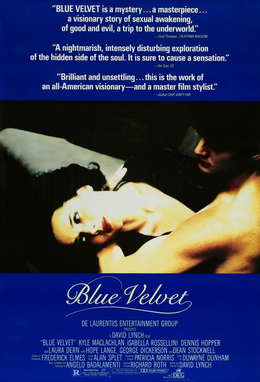
Blue Velvet is a 1986 American neo-noir mystery thriller film written and directed by David Lynch. Blending psychological horror with film noir, the film stars Kyle MacLachlan, Isabella Rossellini, Dennis Hopper, and Laura Dern, and is named after the 1951 song of the same name. The film concerns a young college student who, returning home to visit his ill father, discovers a severed human ear in a field. The ear then leads him to uncover a vast criminal conspiracy, and enter into a romantic relationship with a troubled lounge singer.
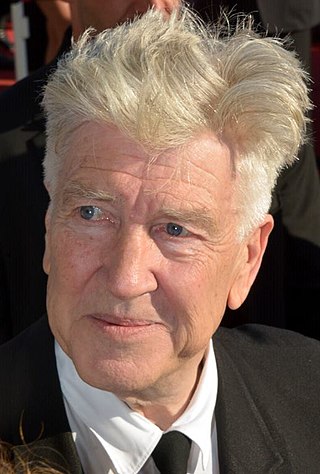
David Keith Lynch is an American filmmaker, visual artist, musician and actor. Lynch has received critical acclaim for his films, which are often distinguished by their surrealist qualities. He has received numerous accolades, including the Golden Lion in 2006 and an Honorary Academy Award in 2019. In 2007, a panel of critics convened by The Guardian announced that "after all the discussion, no one could fault the conclusion that David Lynch is the most important film-maker of the current era."

David Paul Cronenberg is a Canadian film director, screenwriter, and actor. He is a principal originator of the body horror genre, with his films exploring visceral bodily transformation, infectious diseases, and the intertwining of the psychological, physical, and technological. Cronenberg is best known for exploring these themes through sci-fi horror films such as Shivers (1975), Scanners (1981), Videodrome (1983) and The Fly (1986), though he has also directed dramas, psychological thrillers and gangster films.
The following is an overview of the events of 1897 in film, including a list of films released and notable births.

Twin Peaks: Fire Walk with Me is a 1992 American psychological horror film directed by David Lynch and written by Lynch and Robert Engels. It serves as a prequel to the television series Twin Peaks (1990–1991), created by Mark Frost and Lynch, who were also executive producers. It revolves around the investigation into the murder of Teresa Banks and the last seven days in the life of Laura Palmer, a popular high school student in the fictional Washington town of Twin Peaks. Unlike the series, which was an uncanny blend of detective fiction, horror, the supernatural, offbeat humor, and soap opera tropes, the film has a much darker, less humorous tone.
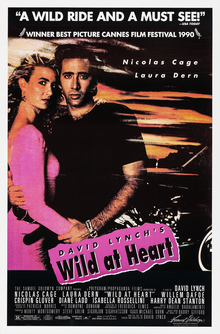
Wild at Heart is a 1990 American romantic crime drama film written and directed by David Lynch, based on the 1989 novel of the same name by Barry Gifford. Starring Nicolas Cage, Laura Dern, Willem Dafoe, Crispin Glover, Diane Ladd, Isabella Rossellini, and Harry Dean Stanton, the film follows Sailor Ripley and Lula Fortune, a young couple who go on the run from Lula's domineering mother and the criminals she hires to kill Sailor.
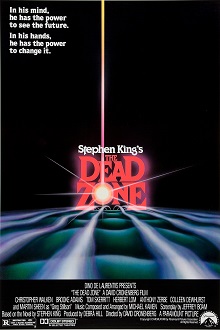
The Dead Zone is a 1983 American science-fiction thriller film directed by David Cronenberg. The screenplay, by Jeffrey Boam, is based on the 1979 novel of the same name by Stephen King. The film stars Christopher Walken, Brooke Adams, Tom Skerritt, Herbert Lom, Martin Sheen, Anthony Zerbe, and Colleen Dewhurst. Walken plays a schoolteacher, Johnny Smith, who awakens from a coma to find he has psychic powers. The film received positive reviews. The novel also inspired a television series of the same name in the early 2000s, starring Anthony Michael Hall, the pilot episode of which borrowed some ideas and changes used in the 1983 film.

Videodrome is a 1983 Canadian science fiction body horror film written and directed by David Cronenberg and starring James Woods, Sonja Smits, and Debbie Harry. Set in Toronto during the early 1980s, it follows the CEO of a small UHF television station who stumbles upon a broadcast signal of snuff films. Layers of deception and mind-control conspiracy unfold as he attempts to uncover the signal's source.
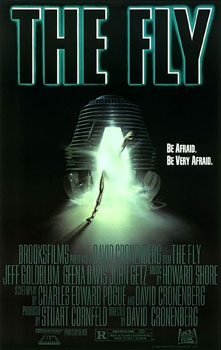
The Fly is a 1986 American science fiction horror film directed and co-written by David Cronenberg. Produced by Brooksfilms and distributed by 20th Century Fox, the film stars Jeff Goldblum, Geena Davis and John Getz. Loosely based on George Langelaan's 1957 short story of the same name and the 1958 film of the same name, The Fly tells of an eccentric scientist who, after one of his experiments goes wrong, slowly turns into a fly-hybrid creature. The score was composed by Howard Shore and the make-up effects were created by Chris Walas, along with makeup artist Stephan Dupuis.

Ronnie Rocket is an unfinished film project written by David Lynch, who also intended to direct it. Begun after the success of his 1977 film Eraserhead, Lynch shelved Ronnie Rocket due to an inability to find financial backing for the project. Instead, he sought out an existing script on which to base his next film, settling on what would become 1980's The Elephant Man. Lynch returned to Ronnie Rocket throughout the 1980s but by the following decade had stopped considering it to be a viable prospect.

David Keith Lynch is an American filmmaker, painter, television director, visual artist, musician, and occasional actor. Known for his surrealist films, he has developed his own unique cinematic style which has been dubbed "Lynchian" and is characterized by its dream imagery and meticulous sound design. The surreal and, in many cases, violent elements to his films have earned them the reputation that they "disturb, offend or mystify" their audiences.

Eraserhead is a 1977 American surrealist body horror film written, directed, produced, and edited by David Lynch. Lynch also created its score and sound design, which included pieces by a variety of other musicians. Shot in black and white, it was Lynch's first feature-length effort following several short films. Starring Jack Nance, Charlotte Stewart, Jeanne Bates, Judith Anna Roberts, Laurel Near, and Jack Fisk, it tells the story of a man (Nance) who is left to care for his grossly deformed child in a desolate industrial landscape.
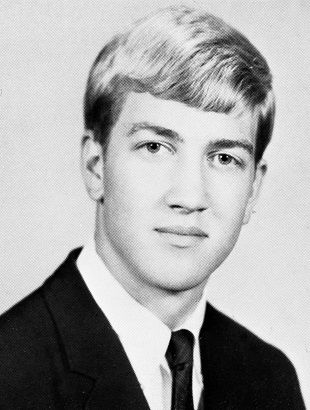
David Keith Lynch is an American filmmaker, painter, television director, visual artist, musician and occasional actor. Known for his surrealist films, he has developed his own unique cinematic style, most often noted for its dreamlike imagery and meticulous sound design. The surreal and, in many cases, violent elements in his films have earned them a reputation as works that "disturb, offend or mystify" general audiences.
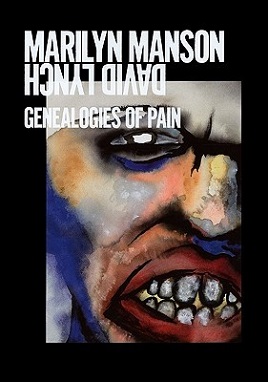
Genealogies of Pain is a coffee table book that was released on April 30, 2011 by Marilyn Manson and David Lynch through German publisher Verlag für moderne Kunst Nürnberg. The 176-page paperback catalogue pairs 30 of Manson's paintings from the Genealogies of Pain art exhibit with stills from four of Lynch's early short experimental films: Six Men Getting Sick , The Grandmother, The Amputee, and The Alphabet. The book also includes an interview with Manson in which he discusses his techniques as well as the art traditions and schools that have been influential to his works.

Six Men Getting Sick (Six Times) (sometimes known as Six Figures Getting Sick) is a 1967 experimental animated short film, directed by David Lynch. A student project that was developed over the course of a semester, it is Lynch's first film and was shot while he was attending the Pennsylvania Academy of the Fine Arts in Philadelphia, Pennsylvania. The film consists of an animated painting, depicting six dysmorphic figures regurgitating in sequence with the sound of a siren loop.

The following is a list of unproduced David Lynch projects in roughly chronological order. During his long career, American film director David Lynch has worked on a number of projects which never progressed beyond the pre-production stage under his direction. Some of these projects fell into development hell or were officially cancelled.

Eraserhead: Original Soundtrack is a 1982 soundtrack album composed by David Lynch and Alan Splet as the soundtrack for Lynch's 1977 film Eraserhead. Sacred Bones Records remastered and reissued the album in 2012.
References
- 1 2 3 4 Lynch and Rodley 2005
- ↑ Svehla, Gary J. (1996). Guilty Pleasures of the Horror Film. Midnight Marquee & BearManor Media.
- ↑ https://movieweb.com/short-films-horror/#this-house-has-people-in-it-2016
- 1 2 Chion, Michel (2019-07-25). David Lynch. Bloomsbury Publishing. ISBN 978-1-83871-520-5.
- ↑ Olson, Greg (2008-09-29). David Lynch: Beautiful Dark. Scarecrow Press. ISBN 978-0-8108-6371-2.